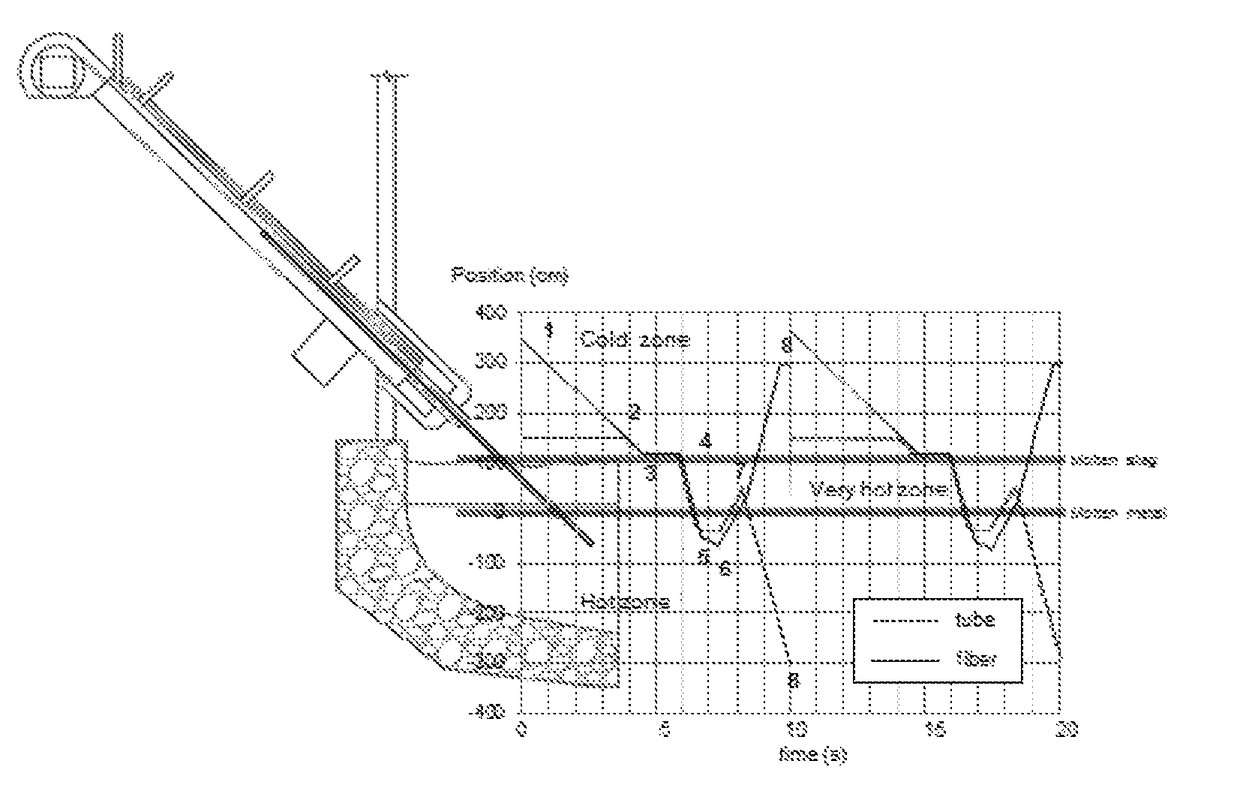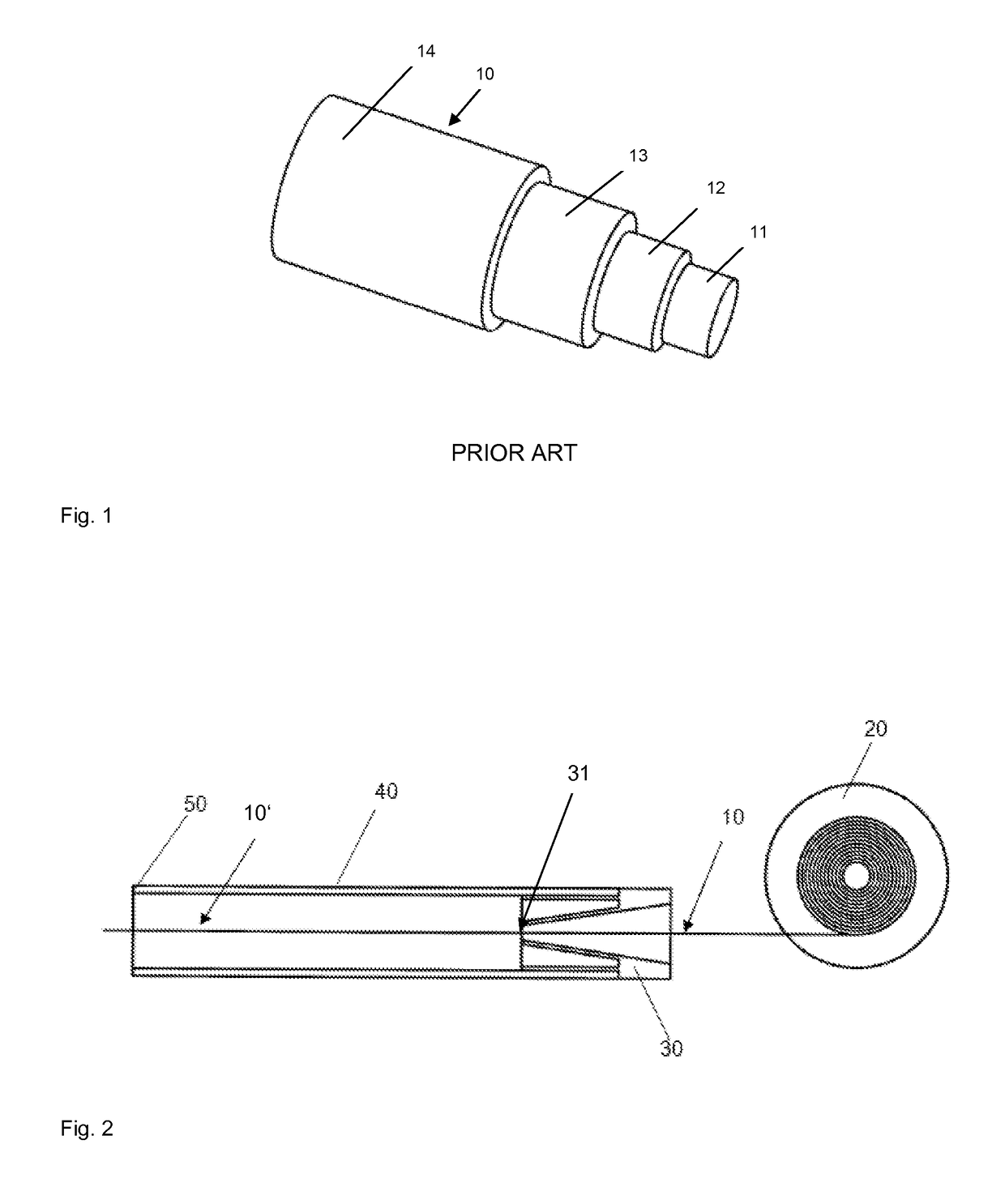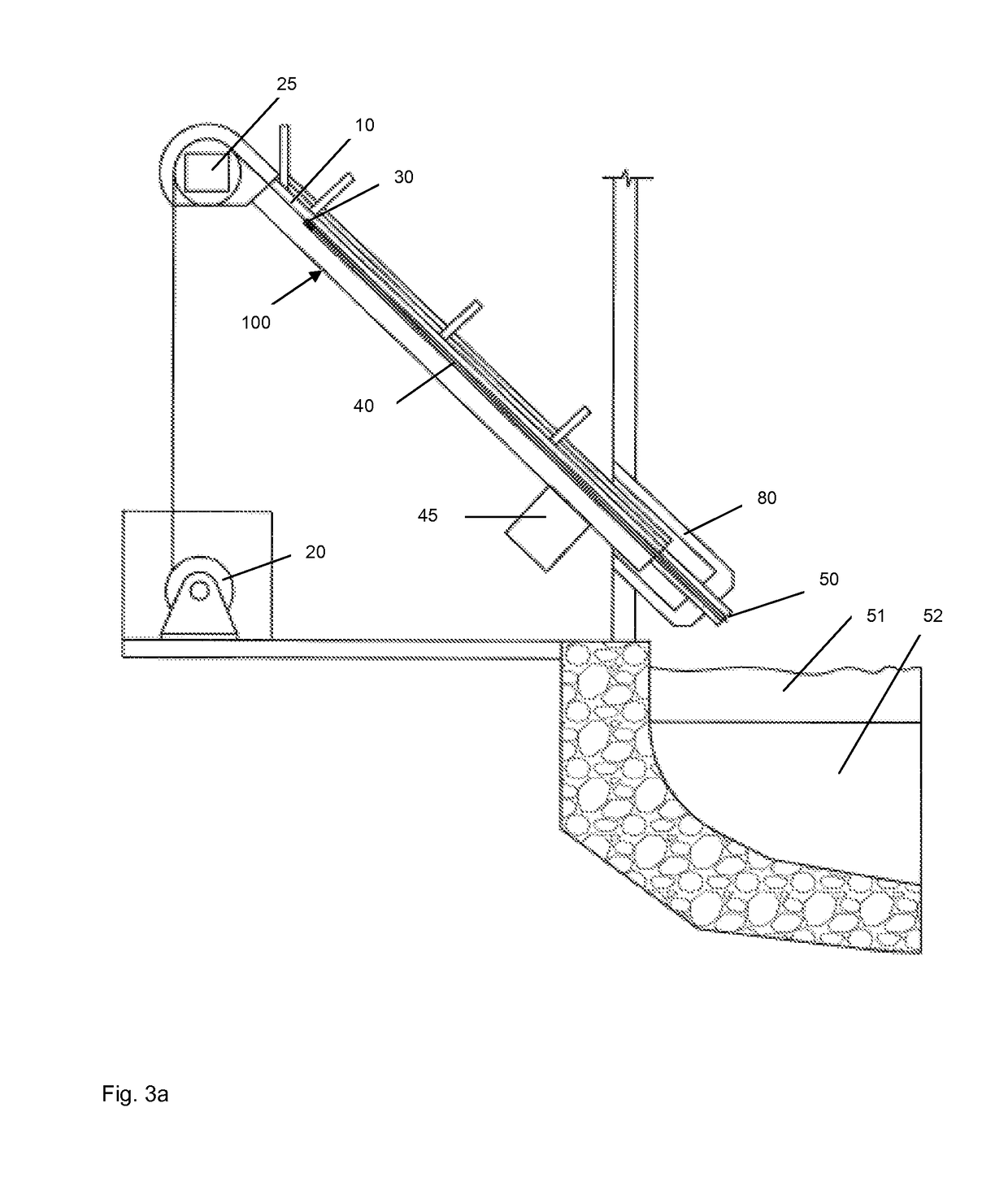Method and apparatus for measuring the temperature of a molten metal
a technology of molten metal and temperature measurement, which is applied in the direction of heat measurement, optical radiation measurement, instruments, etc., can solve the problems of unintentional de-slagging, unfavorable use of heat exchangers, and only 55-65% energy efficiency of steelmaking, and achieve the effect of low cos
- Summary
- Abstract
- Description
- Claims
- Application Information
AI Technical Summary
Benefits of technology
Problems solved by technology
Method used
Image
Examples
Embodiment Construction
[0082]The device is described as follows by way of example. FIG. 1. shows prior art consumable optical fiber 10, typically employed in the measurement of liquid metals, comprising an optical fiber, a plastic jacket covering the optical fiber and a protective metal tube covering the surface of the plastic jacket. The optical fiber 10, typically a graded index multimode fiber made of quartz glass having an inner core 11 with a diameter of 62.5 μm and an outer cladding 12 with a diameter of 125 μm covered with a polyimide or similar material 13. The protective metal tube 14 is typically stainless steel having a 1.32 mm outer diameter (OD) and 0.127 mm wall thickness. Although a metal covered optical fiber is preferred, additional embodiments where 14 and / or 13 are replaced by a singular plastic material do not depart from the intended invention.
[0083]FIG. 2 shows the leading section 10′ of a metal coated optical fiber 10, as fed from spool 20 through a gas retaining elastic plug 30, af...
PUM
| Property | Measurement | Unit |
|---|---|---|
| area | aaaaa | aaaaa |
| area | aaaaa | aaaaa |
| temperature | aaaaa | aaaaa |
Abstract
Description
Claims
Application Information
 Login to View More
Login to View More - R&D
- Intellectual Property
- Life Sciences
- Materials
- Tech Scout
- Unparalleled Data Quality
- Higher Quality Content
- 60% Fewer Hallucinations
Browse by: Latest US Patents, China's latest patents, Technical Efficacy Thesaurus, Application Domain, Technology Topic, Popular Technical Reports.
© 2025 PatSnap. All rights reserved.Legal|Privacy policy|Modern Slavery Act Transparency Statement|Sitemap|About US| Contact US: help@patsnap.com



